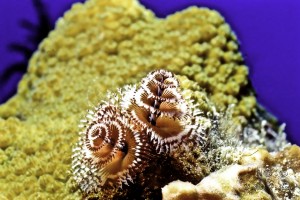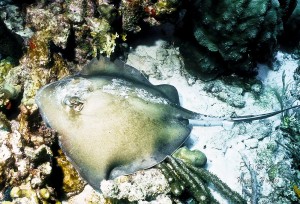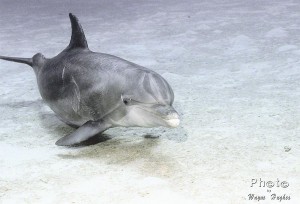High School Portrait In Missouri. A creative high school portrait of student in Missouri.
Old Cold Mack Truck.
Just a little snow on the cars today.
Out of the Dark and into the Light.
Cold Old Car
No More Fires For This Fire Truck
Oh, Christmas Tree Worm!
Oh, Christmas Tree Worm!
When swimming over the reef, divers are often amazed to see what appear to be tiny, feathery Christmas trees growing out of many of the coral heads. These little tree-like objects are in fact a calcareous tube worm commonly known as the Christmas tree worm.
Christmas tree worms produce glue-like mucus which is mixed with fine sand to build a hard, calcareous tube to conceal and protect the worms’ body. The tubes are normally hidden in the reef substrate. Calcareous tube worms like the Christmas tree worm look more like flowers or trees than worms because, while their bodies are hidden from divers and snorkelers, their gill structures called crowns or radioles are extended from the end of the tube. Christmas tree worms have two spiraled gill crowns each one to one and one half inches tall.
These feather-like appendages act as both gills for respiration and to capture food in the form of plankton. There are a variety of crown colors and patterns, including black, gold, orange, pink, yellow, and multicolored. The worm’s mouth is at the center of the feathery crown. The calcareous tube worm uses an operculum similar to that of snails to cover its tube opening when the gill structure is retracted.
Many new underwater photographers have learned that tube worms can instantly retract their gill structures if disturbed by either movement or changes in light intensity. This phenomenon can be witnessed when a diver waves his hand over the gills or in some cases when a diver’s shadow covers the worm tube. Frustrated photographers will find that with a little patience, the crowns will slowly extend and reopen after a few seconds.
Christmas tree worms are abundant on all areas of the reefs in the Caribbean, the Bahamas, and Florida. When next cruising over the reef, take a close look at these tiny tube worms inhabiting the coral heads and ruble. They definitely enhance the beauty of our underwater world.
By
Lynn Hughes
Stingrays, Rays, & More Rays!
Some of the most graceful creatures in the sea are undoubtedly the stingrays. Because of their shallow depth ranges and feeding patterns, snorkelers are also often able to see these unique creatures.
There are eleven species of stingrays in North America. Although they do not have a normal fish shape, stingrays are fish with a skeleton of cartilage just like sharks. Since stingrays are bottom feeders, their body has developed into a unique flattened, diamond shape formed by enlarged pectoral fins. These fins form pointed wing tips on each side of the body and extend forward past the mouth into a pointed snout. The absence of a dorsal fin, and a long whip-like tail, which is about the length of the body, further enhance their unique look. The pectoral fins are used for swimming, feeding, and when burying their bodies in the sand.
Stingrays are armed with one or two poisonous spines on their long tails. In the accompanying photo, this spine can be seen protruding slightly from the top edge of the tail just behind the body. Body color depends on the ray’s surroundings and varies from shades of light brown, gray, or olive green on the upper body with the bottom surface white with gray or brown edges. The ridge near the eyes and the tail are usually much darker.
Like many other masters at camouflage on the reef, Southern Stingrays can bury themselves in the sand in only a few seconds with a wave of their pectoral fins, leaving only the eyes and tail exposed.
Since these rays are bottom dwellers, versus swimming rays like the Spotted Eagle Ray and Giant Manta, their mouth and gill openings are located on the bottom side of the body. Moving backward and forward using their pectoral fins to stir the bottom sand, they dislodge worms, mussels, and small crustaceans which they suck into their mouth much like a vacuum. In turn, Southern Stingrays become a food source for larger fish like the Goliath Grouper and sharks, particularly hammerheads.
The Southern Stingray can reach body lengths of up to five and one half feet, excluding the tail, but the average is three to four feet long. Females are much larger than the males
Southern Stingrays can be found in all habitats and depths from one foot to around 80 feet deep, but they are more commonly found in sandy areas, near shores, or in bays where they feed. They have a wide range extending from the east coast of the United States down through the Gulf of Mexico and the Caribbean to Brazil.
By
Lynn Hughes
The Trumpetfish is coming to you
No, it isn’t a snake or an eel. This curious trumpetfish found during a photo shoot at Bonaire, Netherland Antilles, was mimicking the soft coral’s movement, carefully laying in wait for the unsuspecting fish meal to swim too close. These fish, with thin bodies up to three feet long, have the ability to change color from yellow to browns, and sometimes with purple markings, to better blend with their backgrounds. They may be seen swimming with other larger fish, hanging head down among soft corals, or next to sponges laying in wait for a meal. Common throughout the Caribbean and Gulf of Mexico, they are carnivores that can quickly grab a meal much larger than they look capable of eating as their mouth flares out like a trumpet—hence the name. This trumpetfish appears to be swimming right out of the frame toward you.
Will We See Dolphins Today?
Will we see dolphins today? That seems to be the question asked most often by divers on the way to the dive sights. Well, quite often dolphins are seen on the rides to and from French Cay, West Caicos, and Northwest Point in the Turks & Caicos Islands. We have also been fortunate enough to snorkel and scuba dive with both Bottlenosed dolphins and Atlantic spotted dolphins on several occasions.
Because of the nature of the reef systems with deep walls dropping into the abyss near areas like West Caicos, French Cay, and Northwest Point, we have had several opportunities to witness the playful antics of dolphins in the wild. On one scuba dive we encountered a pod of between 75 and 100 dolphins off West Caicos. They appear to enjoy playing in bow wakes and occasionally even jumping clear of the water.
I think our most memorable scuba diving and snorkeling experience occurred at West Caicos. We were conducting Discover Scuba Diving experiences with a group of teenage cancer survivors. Upon surfacing at the end of the dive, the crewmember on board told us that a pod of dolphins was moving in our direction. We moved away from the boat and soon they approached. There were eleven Atlantic Spotted Dolphins in a tight formation. Ten of the dolphins appeared to be protecting another dolphin in the center of the pod. They approached within about 5 to 10 feet of our group and appeared to be unconcerned with our presence. The individual in the center of the group was quivering. Periodically it would surface and forcefully slap its tail. We dove and snorkeled with them for about 20 minutes before they moved out to deeper water. After moving away, one individual jumped clear of the water.
Two days later, we returned to the same sight. Prior to mooring, we noticed a pod of dolphins on the surface. Upon approaching, they began to play in our bow wake. We then observed a larger adult with a much smaller juvenile next to it. We wondered if we had observed the birthing process and this juvenile was the result. What a memorable day of diving for those kids and us too!
By
Lynn Hughes
















